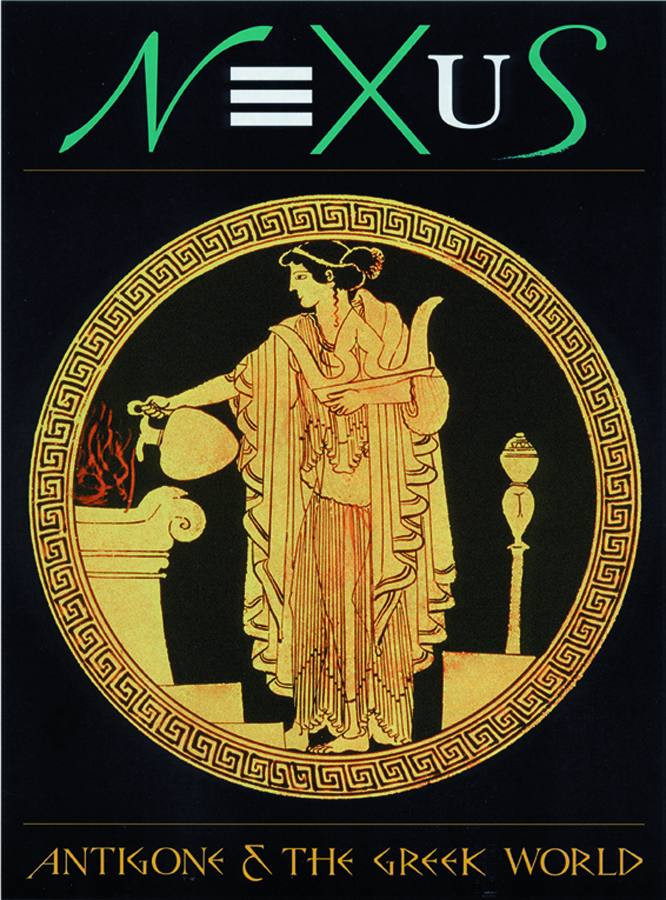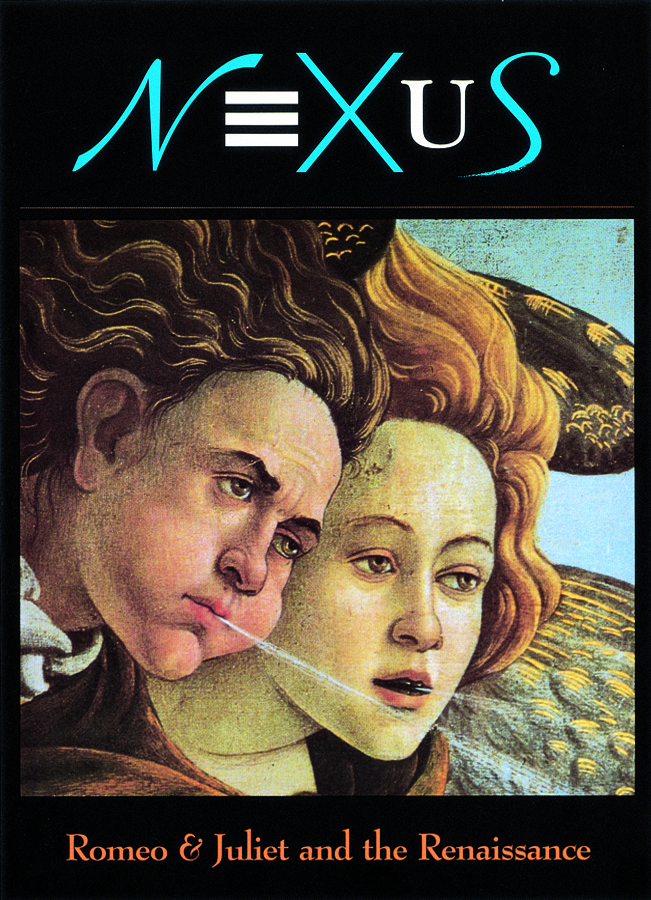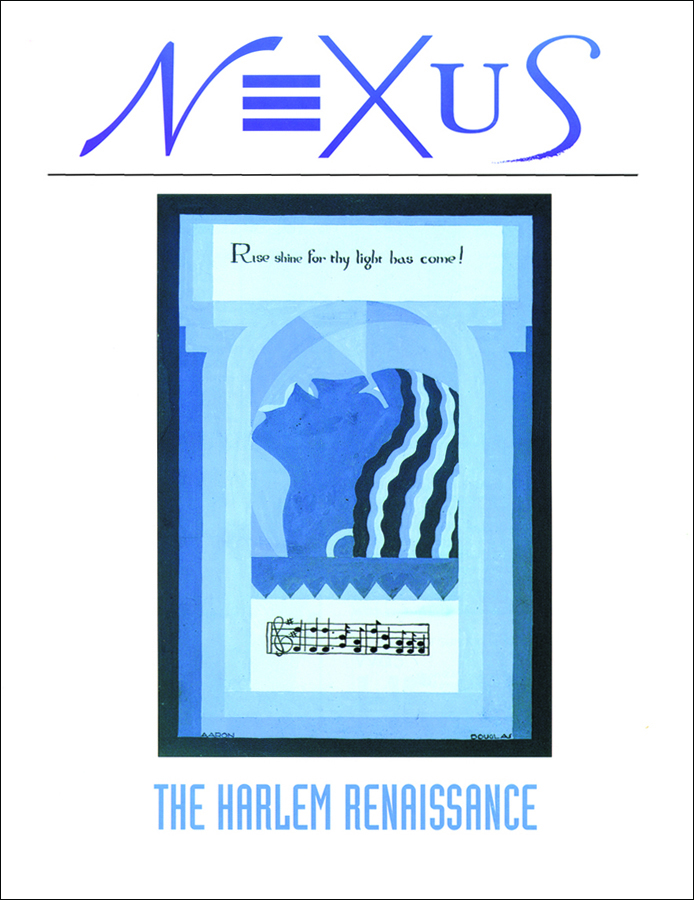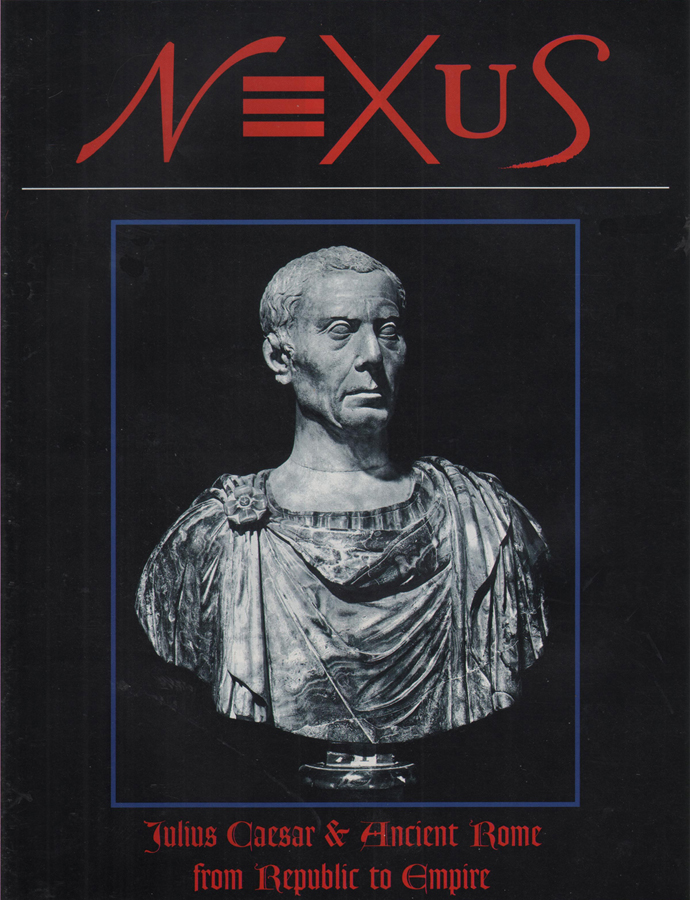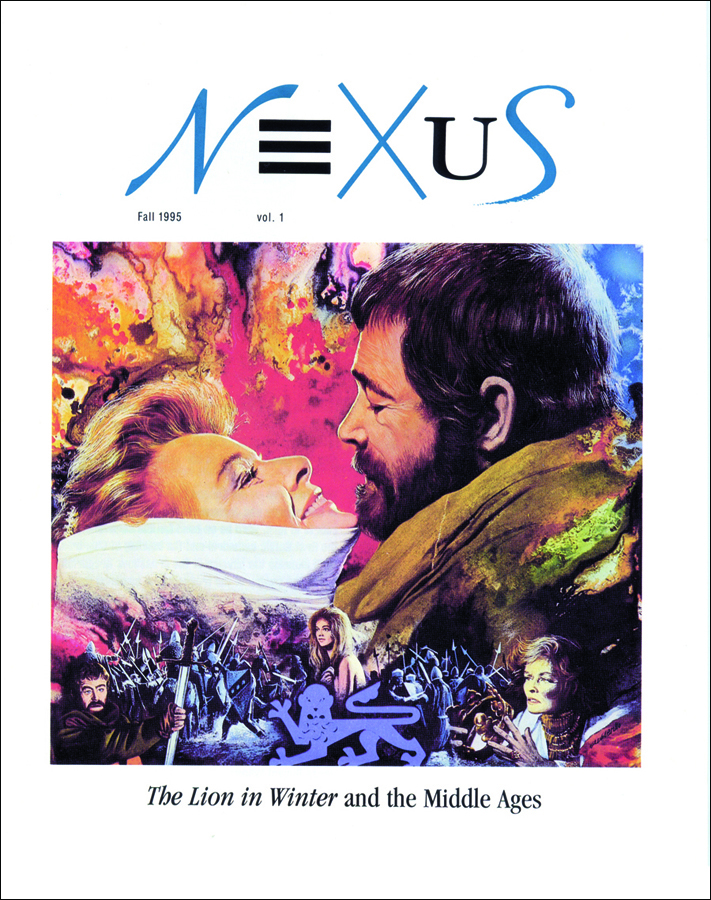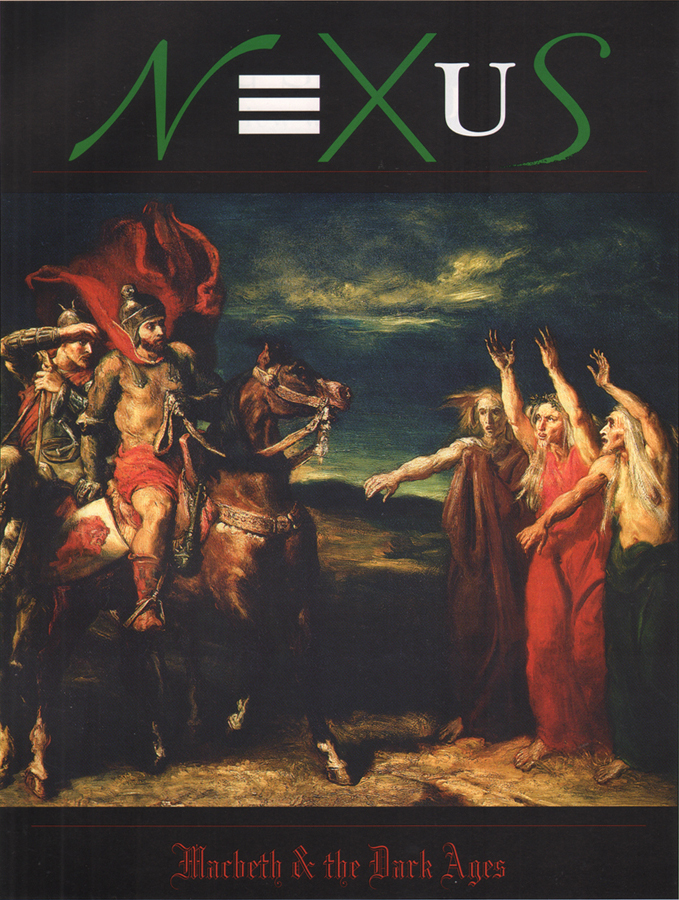
JULIUS CAESAR Lessons:
These Common-Core aligned FREE and FEE Julius Caesar lessons will help students analyze tensions in the play, recognize the role dialogue and character interaction (what is said and what is suggested) play in advancing the plot, identify character traits from speech patterns and write in-character dialogue, improve their elocution, compare accounts of the historical Caesar and Brutus, and imagine, write and block their own Julius Caesar scenes.
TO ACCESS THE FREE or FEE LESSONS, REGISTER HERE.
(Each FEE JULIUS CAESAR Lesson allows 30 days of access.)
TO ENSURE THE INTEGRITY OF THE ANSWERS TO LESSON QUESTIONS, THEY ARE NOT POSTED ONLINE.
TO REQUEST THE ANSWERS, EITHER EMAIL US A REQUEST, USING THE LINK BELOW, WITH YOUR DEPARTMENT HEAD’S OR PRINCIPAL’S SCHOOL EMAIL ADDRESS (Answers will not be sent to personal email addresses)
OR
SEND AN SASE (with the appropriate amount of postage) ON SCHOOL LETTERHEAD, ADDRESSED TO THE DEPARTMENT CHAIR to
NEXUS, 5017 Archmere Ave., Cleveland, OH 44144
Reading Character, Scene-Writing and Elocution Lessons
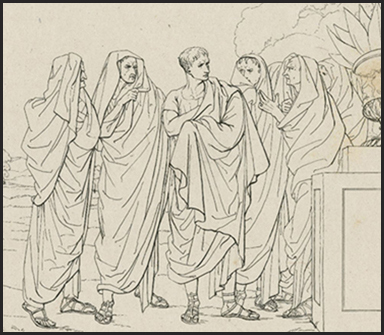
Caesar’s Last Mile, Writing Your Own Scene – FREE Lesson
The Theater of Pompey where the assassination takes place is about a mile walk from Caesar’s home. What do the conspirators and their victim say to each other during their jaunt? How do the conspirators cloak their intentions from the perceptive Caesar? Shakespeare doesn’t tell us. We invite student teams to fill in the part of the historical record that Shakespeare leaves out by extrapolating from what they know about each character and adding a scene to the play using in-character dialogue. We ask them to write in Shakespearean English and to include at least two antitheses and two metaphors (another online lesson teaches students “How to Pen Puns, Metaphors and Antitheses” – see Romeo and Juliet Lessons).
Students will plan, write, and perform their scene which should be inserted at the end of Act II of Julius Caesar.
In the lesson, students explore what one could call a cross-section of the play, a vital cross-section in which the conflicting natures and goals of the principals mesh in powerful and potentially dramatic ways. This approach enables each student to probe a character under a microscope and in his or her own core rather than as a passive reader sitting at a desk or in front of a computer at a great emotional and historical distance from Caesar and the Roman conspirators. In brief, each student will enter the psyche of an ancient character at a crucial moment and feel her or his own way toward the climactic assassination scene. In addition, the lesson teaches students to identify speech patterns that distinguish one character’s personality from another’s.
STUDENT PORTAL – Caesar’s Last Mile – Writing Your Own Scene
For ACCESS to this FREE JULIUS CAESAR LESSON
COMMON CORE STANDARDS MET WITH THIS LESSON:
CCSS.ELA-LITERACY.RL.9-10.3
Analyze how complex characters (e.g., those with multiple or conflicting motivations) develop over the course of a text, interact with other characters, and advance the plot or develop the theme.
CCSS.ELA-LITERACY.RL.9-10.4
Determine the meaning of words and phrases as they are used in the text, including figurative and connotative meanings; analyze the cumulative impact of specific word choices on meaning and tone (e.g., how the language evokes a sense of time and place; how it sets a formal or informal tone).

Portia-Calpurnia Meetup – FREE Lesson
Students will pair up and add a scene in the style of Shakespeare at the end of Act II of Julius Caesar. In this scene, Calpurnia and Portia will meet at the outdoor market in the Roman Forum just before and during the assassination of Julius Caesar. Students will write their in-character dialogue in Shakespearean English and include at least two antitheses and two metaphors, which will help them to better appreciate and understand Shakespeare’s figurative language.
The lesson invites students to probe a character under a microscope and in her (or his) own nature rather than as a passive reader at a vast emotional and historical distance from these ancient Roman women. In brief, students enter the psyche of Portia or Calpurnia at an intensely dramatic moment and feel their way through the mounting tensions inherent in the scene.
STUDENT PORTAL – Portia-Calpurnia Meetup
For ACCESS to this FREE JULIUS CAESAR LESSON
COMMON CORE STANDARDS MET WITH THIS LESSON:
CCSS.ELA-LITERACY.RL.9-10.3
Analyze how complex characters (e.g., those with multiple or conflicting motivations) develop over the course of a text, interact with other characters, and advance the plot or develop the theme.
CCSS.ELA-LITERACY.RL.9-10.4
Determine the meaning of words and phrases as they are used in the text, including figurative and connotative meanings; analyze the cumulative impact of specific word choices on meaning and tone (e.g., how the language evokes a sense of time and place; how it sets a formal or informal tone).
Images Courtesy of Folger Shakespeare Library
Comparing Accounts of the Battle of Philippi
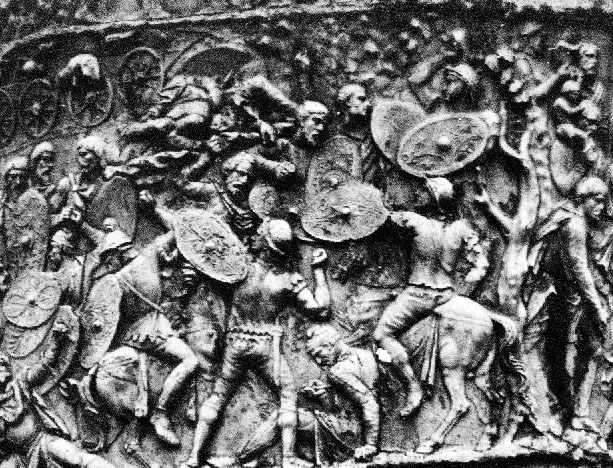
Battle of Philippi, Comparing Accounts – FEE Lesson
In this lesson, students compare ancient accounts of the Battle of Philippi with Shakespeare’s version of the battle.
STUDENT PORTAL – Battle of Philippi, Comparing Accounts
COMING SOON
COMMON CORE STANDARDS MET WITH THIS LESSON:
Cite strong and thorough textual evidence to support analysis of what the text says explicitly as well as inferences drawn from the text.
Determine a theme or central idea of a text and analyze in detail its development over the course of the text, including how it emerges and is shaped and refined by specific details; provide an objective summary of the text.
Analyze how complex characters (e.g., those with multiple or conflicting motivations) develop over the course of a text, interact with other characters, and advance the plot or develop the theme.
Determine the meaning of words and phrases as they are used in the text, including figurative and connotative meanings; analyze the cumulative impact of specific word choices on meaning and tone (e.g., how the language evokes a sense of time and place; how it sets a formal or informal tone).
Comparing Monologues and Crowd Manipulation Techniques – Julius Caesar Lesson

Contrasting Brutus’ and Antony’s Speeches – FEE Lesson
Students contrast the rhetorical techniques in Brutus’ and Marc Anthony’s famous monologues.
STUDENT PORTAL – Contrasting Brutus’ and Antony’s Speeches
COMING SOON
Image Courtesy of Folger Shakespeare Library
Penning Puns, Antitheses and Metaphors Lesson

Writing à la Shakespeare – FEE Lesson
SHAKESPEARE’S language doesn’t have to stump students. The HOW TO PEN PUNS, METAPHORS & ANTITHESES lesson teaches them, step by step, how to write their own metaphors, antitheses and puns.
When students learn to WRITE figurative language, they are much more adept at READING it.
This lesson can be used with any Shakespeare play. For only $6 (for the entire class), the HOW TO PEN PUNS, METAPHORS & ANTITHESES lesson will change how students respond to Shakespeare’s language forever. After creating their own antitheses, metaphors and puns students will appreciate and be able to readily explicate Shakespeare’s figurative language.
Student Portal – How to Pen Puns, Antitheses, and Metaphors Lesson
COMMON CORE STANDARDS MET WITH THIS LESSON:
Determine the meaning of words and phrases as they are used in the text, including figurative and connotative meanings; analyze the cumulative impact of specific word choices on meaning and tone (e.g., how the language evokes a sense of time and place; how it sets a formal or informal tone).l tone).
Shakespeare Study Hall (Coming Soon)
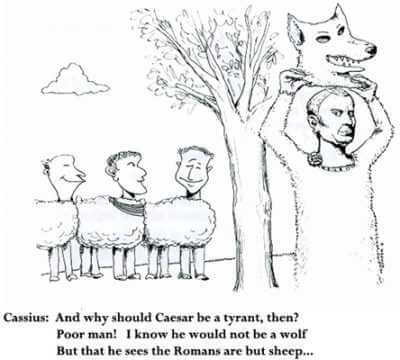
Tackling the Figurative Language in Shakespeare’s Plays
In the online SHAKESPEARE STUDY HALL students explicate Shakespeare’s figurative language using graphic tools that help them to identify antithesis, parallelism, oxymoron, etc. The language is made clear and entertaining with cartoons that SHOW what Shakespeare SAYS.
The SSH is divided into three rooms – brain workout rooms: 1) the Romeo and Juliet Room; 2) the Macbeth Room; and 3) the Julius Caesar Room. Each year students’ facility with Shakespeare’s figurative language will greatly improve as they advance to the higher numbered rooms and tackle increasingly challenging exercises – or mental aerobics. As students acquire mastery over Shakespeare’s language, their reading and critical thinking skills will dramatically improve in literature and all other subjects.
NEXUS is a 501(c)(3) nonprofit based in Cleveland, OH. Our mission is to provide schools with outstanding interdisciplinary resources that inspire students to THINK, LINK and IMAGINE.
A portion of our proceeds is donated annually to UNICEF’S Audrey Hepburn All Children in School Fund.


